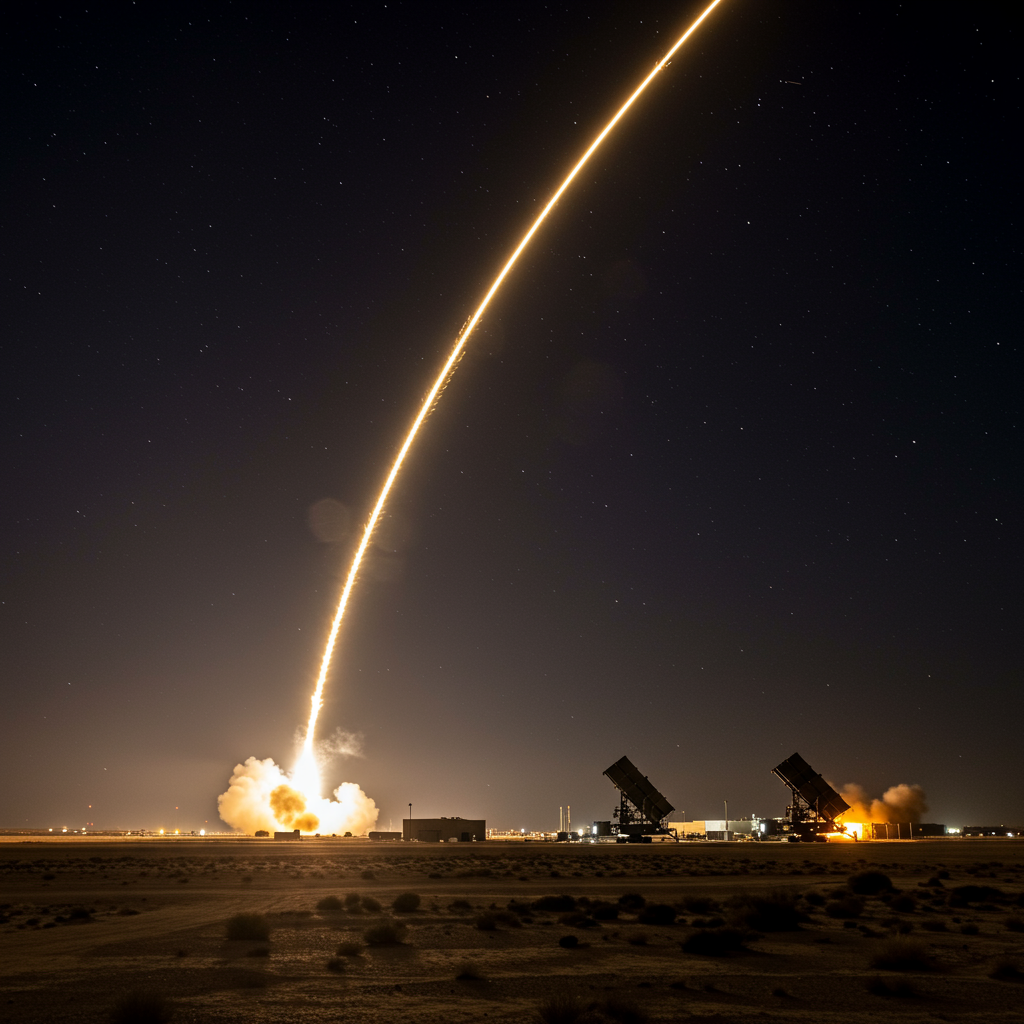Tensions surged in the Middle East following a missile attack by Iran targeting the primary U.S. military installation in Qatar, the Al Udeid Air Base. The incident, confirmed by both U.S. and Qatari authorities, occurred as hostilities between Iran and Israel reached a critical point, fueled by preceding U.S. strikes on Iranian nuclear facilities.
Missiles Fired at Al Udeid Air Base
The attack on Al Udeid, located southwest of Doha, saw Iran launch ballistic missiles towards the base which serves as the forward headquarters for U.S. Central Command (CENTCOM) and hosts thousands of American troops. According to U.S. and Qatari reports, the number of incoming missiles ranged from 14 to 19.
Iran’s Islamic Revolutionary Guard Corps (IRGC) claimed responsibility for the assault, terming it “Annunciation of Victory” and explicitly stating it was a response to recent U.S. military strikes against Iranian nuclear sites. The IRGC warned that U.S. bases in the region were vulnerable targets.
Crucially, U.S. and Qatari air defense systems, including Patriot missile batteries, were largely successful in intercepting the incoming projectiles. While most missiles were downed, reports indicate at least one missile impacted the base facility. However, U.S. and Qatari officials confirmed that the attack resulted in no reported casualties among personnel. Prior to the strike, Qatari officials stated the base had been evacuated.
Qatar swiftly condemned the attack as a “flagrant violation” of its sovereignty, airspace, and international law, affirming its right to respond. As a precaution, Qatar temporarily closed its airspace, and the U.S. Embassy in Doha issued a “shelter in place” advisory for Americans, which was later lifted.
Context: US Strikes on Iranian Nuclear Sites
The Iranian missile attack on Al Udeid did not occur in isolation. It followed U.S. strikes days earlier on three Iranian nuclear enrichment sites. Described as “Operation Midnight Hammer,” these U.S. actions, reportedly involving B-2 stealth bombers, aimed to significantly disrupt or “obliterate” Iran’s nuclear program and highly enriched uranium stores, according to statements from U.S. officials. The U.S. framed these strikes as a response to perceived Iranian progress towards nuclear weapons.
Concurrent Attacks and Disputed Ceasefire Claims
Adding to the volatility, Iran also launched numerous missile barrages targeting Israel around the same time as the attack on the Qatar base. These strikes triggered sirens across Israel, including in major cities like Jerusalem and Beersheba. Tragically, reports from Israel confirmed significant damage and casualties, including fatalities, particularly in Beersheba where residential buildings were hit.
Amidst this intense exchange, U.S. President Donald Trump announced on social media that a “Complete and Total CEASEFIRE” had been agreed upon by Israel and Iran, brokered with Qatari assistance. Trump outlined a phased implementation starting within hours and declared the “12 Day War” officially ended within 24 hours. He even controversially thanked Iran for reportedly giving “early notice” of the Al Udeid strike, which he claimed allowed for the avoidance of casualties there.
However, Trump’s announcement was quickly contradicted by events on the ground and statements from Iran. Shortly after the supposed ceasefire start time, Israel reported continued missile launches from Iran. Iran’s Foreign Minister publicly denied a formal agreement existed, although he stated Iran had no intention to continue its retaliatory actions if Israel ceased its “illegal aggression” by a specific time.
Citing the continued attacks as a “blatant violation” of the purported ceasefire, Israel responded forcefully. Under “Operation Rising Lion,” Israeli Air Force jets launched high-intensity strikes targeting military and regime command centers deep within Tehran and elsewhere in Iran, aimed at eliminating perceived existential threats posed by Iran’s nuclear program and missile capabilities. This followed Israel’s earlier declaration of having achieved all objectives in its own “Operation ‘Am K’Lavi’,” claiming the elimination of dual nuclear and ballistic missile threats and achieving air superiority over Tehran.
The rapid sequence of U.S. strikes on Iran, followed by Iranian retaliation targeting both Israel and the U.S. base in Qatar, and then Israel’s swift counter-response amidst conflicting reports of a ceasefire, underscores the dangerous complexity and rapid escalation of the conflict gripping the region. The attack on Al Udeid highlights the direct risk posed to U.S. forces in the Middle East as a result of the broader Iran-Israel tensions.

